PRODUCTION SHIFTS: SPECIALIZED, HUMANIST, LOCAL, NICHE, OPEN

Open production is still mostly in its infancy with a focus on tool development, making toys and fixing components. As the field and tool designs mature, a wider development of original products for market will become available. As consumers gain acceptance of these new local niche products, an increased self-reliance will begin at the community level, empowering society and the makers that produce them. The online communities will continue producing specialized open knowledge, allowing anyone with a little skill to get involved in every facet of production a society needs, requiring little to no need for specialization; giving people the ability to control their own wealth, removing the feeling of being an undervalued gear in a production model.
Open Source; DIY; Hacker; Maker; the meaning of these terms varies, but they have a common element in changing the way that our society produces things we need or desire to enrich our lives, communities and ultimately redefine the meaning of ‘wealth’. Similarly to the previous changes in how humanity used to produce artifacts, massive technological advances as well as social and international political issues are fueling the current shift.
This article analyzes historical shifts, some of which have yet to reach every sector in production. The timeline continues into the current shift to open production systems and highlights several communities that are pioneering this movement. Historically, the process of acquiring wealth was linked solely to creating monetary gains from the production of needed goods, and so was optimized to do so.
Producing specialization: realization of advantages for division of labor
First published in 1776, ‘The Wealth of Nations’ by Adam Smith explains that a nation is often of higher wealth when it can produce the needed goods and conveniences of life with a lower input of labor. He attributed a nation’s ability to do so with its ability to divide labor into sub tasks, which a worker could become accustomed to and be specialized in. His works contribute to the ability of such division to increase the outputs of labor to three main factors:
- Increasing dexterity and ability of every workman to do a single task, by reducing the number of tasks;
- Time savings gained from not switching between tasks or species of work as he called different jobs;
- Creation of mechanical equipment that allowed a single man to do the same amount of work as several men.
This mechanical equipment was often created by those that used it, or in some situations by ‘philosophers’, whose job was to observe every aspect of society and combine dissimilar and distant objects. Adam Smith also stated that some labor such as that of agriculture, is not easily divided into tasks for individual men and that such labors require workers to switch tasks and not further specialize.
The practice of optimizing wealth creation with specialization eventually created an environment that brought up concerns into how people were treated in a context of an ever-increasing industrial production system.
Producing humanism: realization of disadvantages for division of labor
By the late 1800’s the amount of specialization in manufacture was such that human beings were equated to simple gears in an industrialized means of production. In response to such dehumanizing working conditions, theorists like Karl Marx attempted to develop a system that could treat workers as humans within the means of production, instead of another machine in the process. Even today not all sectors of production are taking human rights into account. This is a cause of concern in the modern world and is a problem with many products built in foreign lands that have different ethical values.
Producing locally: creating secure local supply, close to consumption
Concerns over outsourcing labour, combined with global instability, has in recent years produced many disruptions in the supply chain of global manufacturing: tsunamis in Japan disrupting automotive manufacture; floods in Thailand disrupting electronics manufacture; political instability along with abuse of human rights; piracy in manufacturing and shipping systems, have all caused global manufacturers to start thinking about producing products closer to the point of consumption.
Due to increasing social pressure and profit loss, major electronics manufacturers, like Lenovo and Apple, are starting to shift higher value production lines, bringing manufacture closer to consumers. As companies make this shift they are creating a stronger supply chain, along with creating stronger ties with governments, by creating more manufacturing jobs onshore.
United States is one of many nations currently pushing to strengthen its weakened manufacturing industry. One of its attempts at doing so is heavy capital investment into research and development centered around creating working environments in which a symbiosis exists between a man and ‘co-robots’. The American government is accomplishing this with the National Robotics Initiative in a hope that it produces production aids to human labor in the fields of manufacture, space exploration, health, and agriculture.
Connecting this drive with the 18th century idea of Adam Smith, the nation is attempting to become competitively more advantageous over other countries, by boosting its workers’ ability to effectively produce more then several workers of any other nation with robotic assistance. Helping to drive the U.S.A. and the majority of western nations to redevelop a strong manufacturing industry is a new desire of their societies to have high quality goods that are built specifically for their particular needs.
Producing niche: connecting supply and demand in novel ways
The production of custom objects has always existed, however in the connected global market it has become an impractical desire for all but the incredibly rich, or lucky few that can brand themselves. Chris Anderson noticed a trend that he presented in his book ‘The Long Tail’ which focused on online marketing. The advance of the internet and international shipping methods had removed the need for physical stores, allowing companies like Amazon to sell millions of products, many of which would never make it into typical stores. This marked a shift from people consuming ‘hits’ created by pop culture to consuming ‘niche’ products that suited personal tastes more closely. Anderson states that these new markets will become larger as people are connected with them, which is facilitated by search engines and artificial intelligence suggestions based on consumption patterns, along with better distribution systems.
In his recent book ‘Makers’ Anderson furthered his description of the ‘long tail’ and these niche markets by introducing digital fabrication and the maker movements as a key driver to expanding the number of products available. These new communities and means of production are suited to smaller more custom runs then that of mass production means like injection molding. This new means of production is drastically driving down the cost of custom or bespoke products, creating value for the consumer.
The issue with these new tools of production is that they are predominantly very expensive machines with limited material selection and are designed for producing prototypes of products, not production parts. Due to these shortcomings many communities have developed around specialized aspects of producing, creating open knowledge.
Producing open: democratizing the means of production
The ‘new’ movements reaching the mainstream more often, such as the do-it-yourself (DIY) movement, Maker movement, Open source movement, and hacker culture are all very similar; so much so that many terms are used interchangeably depending on the project. This interchangeable usage of terms comes from a main commonality between these movements: they attempt to change laborers from gears in a national or global manufacturing system to a hive of creative humans laboring to add value to their lives, while producing open global knowledge that helps others better their own.
Around the emerging core idea of openness, numerous research and development networks have emerged, comprised predominantly of distributed online communities, which have the ability to produce real world objects in a varied of distributed ways around the world. These objects are created for the local environment and take into account the social and economic restrictions of an area, while using locally available materials to produce a derivative of the original global design.
As an introduction to this new form of creating, the following are a few influential communities that have a spirit for open source and creation:
Arduino: Wiring and coding together. This project started around the idea that industrial designers could not get into electronic design as it was too expensive and an entirely different field of study. The project developed open source hardware, firmware, and software in order to make the process of developing interactive electronics cheaply. Due to it being open source, many other companies produce add-on components known as shields, which extend the functionality by adding complex electronics like wireless networking and GPS to projects. The Arduino project does not actually produce any of the fifteen board designs available but rather licenses the trademark to other companies that manufacture them, along with the countless shields.
An interesting derivative of the Arduino project worth mentioning, is the high-low-tech project by Massachusetts Institute of Technology who has done work mostly on creating electronics that use hand crafting techniques such as sewing and origami. A key component used in most of the projects is a single chip that is programed with Arduino that costs under a dollar, making simple projects and experimentation with the technology very accessible.
RepRap: Building together. The RepRap Darwin was the first open source 3D printer on which all the current models are based on. These printers are capable of “printing” layer by layer of plastic filament, much like how a hot glue gun extrudes glue; once a layer is complete the G-code, which is what controls all Computer controlled machining equipment moves up a layer and starts the next profile. A key design feature of the machine is that it can produce all the plastic parts of itself, making it known as a ‘self-replicator’. However its not truly replicating as electronics and metal rods can not be produced. The majority of the machines use Arduino hardware or coding to drive the motors and heaters required to operate making it a sort of derivative of the Arduino project.
The RepRap itself has not seen much mainstream coverage as it’s not a commercial project, however many of its derivatives such as Makerbot, and Printrbot have had great success and are attempting to produce machines for the general public. The creators of Makerbot have also created Thingiverse, which is an online community of people sharing digital design, which can be downloaded and printed by anyone in the world.
Windowfarms: Growing together. This project consists of nearly 40,000 registered members, who “R&D-I-Y” research-and-develop-it-yourself, vertical indoor farms. The project started by using recycled pop and water bottles along with readily accessible parts from pet, plant and hardware stores to develop residential low maintenance hydroponic systems. The project still continues as an open source one, but now also has a commercial product available based on the work done in the community. This opens up the community to more people that are passionate about gardening indoors but do not have the skills required to workout their own system from scratch.
The community is global and has developed many derivatives and additions to the system in order to grow food in different environments. One such add-on is an LED lighting system, which provides the blue and red light that the plants need to grow without wasting energy, producing green light which the plants reflect (this is why plants appear green because they toss off the light they can not use in photosynthesis). The lighting addition is vital to growing anything in northern climates which do not get enough light in the winter months. This team attempted to solve a local problem and has created a globally significant pool of knowledge, as a byproduct of creative commons.
Producing future: increased self-reliance
These movements surpass specialization by openly sharing each others’ specialized knowledge with one another; they go beyond realizing Marx idea that laborers should be treated as humans and not gears or units in mechanized manufacture, to making them active participants in the research, development, production, distribution, and profiting from production. They actively support niche development by licensing designs and code in creative commons, along with support pages in the active forums. Local is built in with the DIY attitude along with specialized groups based on location for material sourcing and, of course, this new means of production is available online for free.
Open production is still mostly in its infancy with a focus on tool development, making toys and fixing components. As the field and tool designs mature, a wider development of original products for market will become available. As consumers gain acceptance of these new local niche products, an increased self-reliance will begin at the community level, empowering society and the makers that produce them. The online communities will continue producing specialized open knowledge, allowing anyone with a little skill to get involved in every facet of production a society needs, requiring little to no need for specialization; giving people the ability to control their own wealth, removing the feeling of being an undervalued gear in a production model.
How will the world look once this new method of production takes place, what other current problems might it solve and what issues will arise from this method?
Bibliography
- Arduino - HomePage. (n.d.). Arduino - HomePage . Retrieved February 28, 2013, from http://www.arduino.cc/
- Anderson, C. (2008). The long tail: why the future of business is selling less of more (Rev. and updated ed.). New York: Hyperion.
- Anderson, C. (2012). Makers: the new industrial revolution. New York: Crown Business.
- Kalil, T., & Thorpe, C. (n.d.). Supporting the President’s National Robotics Initiative | The White House. The White House. Retrieved February 28, 2013, from http://www.whitehouse.gov/blog/2011/08/03/supporting-president-s-national-robotics-initiative.
- Rampell, C., & Wingfield, N. (2012, December 6). In Shift of Jobs, Apple Will Make Some Macs in U.S. - NYTimes.com. The New York Times - Breaking News, World News & Multimedia. Retrieved February 28, 2013, from http://www.nytimes.com/2012/12/07/technology/apple-to-resume-us-manufacturing.html?pagewanted=all&_r=0
- RepRap - RepRapWiki. (n.d.). RepRap - RepRapWiki. Retrieved February 28, 2013, from http://www.reprap.org/wiki/Main_Page Science Foundation. (n.d.). National Robotics Initiative . National Science Foundation . Retrieved February 28, 2013, from www.nsf.gov/funding/pgm_summ.jsp?pims_id=503641&org=CISE
- Smith, A. (1776). An inquiry into the nature and causes of the wealth of nations. Chicago: Encyclopædia Britannica.
- Marx, K. (1967). Das Kapital 1867-1967: beitrage uber "Das Kapital" und marxistische politische Okonomie. Veroffentlicht anlasslich des 100. Jahrestages des erscheinens des hauptwerkes von Karl Marx.. Frankurt-Main: August-Bebel-Gesellschaft. Technical University, D. (Director). (2011). Mechatronics: Arduino & RepRap - Creating Wealth by Giving it Away [Slide program]. Denmark: Technical University of Denmark.
- Windowfarms - Vertical Garden for Growing Herbs and Vegetables at Home. (n.d.). Windowfarms - Vertical Garden for Growing Herbs and Vegetables at Home. Retrieved February 28, 2013, from http://www.windowfarms.com/


